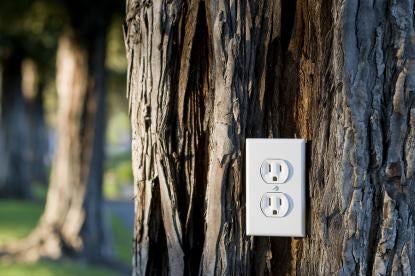The Inflation Reduction Act of 2022 (IRA), has several primary goals, including: promoting clean energy, manufacturing, and construction through a wide array of tax incentives and grants; raising revenue through the primary mechanisms of a new corporate alternative minimum tax and an excise tax on the repurchase of corporate stock; and managing medical costs for individuals.
Significantly, the IRA establishes new or expanded tax credits for energy facilities that are renewable, have zero net carbon emissions, or serve low-income or disadvantaged communities. To combat the impact of closing traditional energy facilities, programs under the IRA provide funding for projects sponsored by governments, communities, or non-profits that target environmental justice issues in low-income or disadvantaged communities.
We discuss several of the tax credit provisions contained in the IRA that are intended to address the carbon-free energy goals as well as continuing to assure a reliable, safe, and affordable energy supply.
Expansions to Renewable Electricity Production Tax Credit – IRA § 13101
The Renewable Electricity Production Tax Credit (REPTC) is an existing credit governed by § 45 of the Internal Revenue Code of 1986. The REPTC is a 1.5 cent per kilowatt-hour credit available to energy facilities for energy sold that is produced from renewable energy resources. Qualifying energy resources under Code § 45(c) are wind, closed-loop biomass, geothermal energy, solar energy, small irrigation power, municipal solid waste, qualified hydropower production, and marine and hydrokinetic renewable energy.
Extended Construction Deadlines: Under current law, the REPTC is only available to solar facilities that were placed in service before January 1, 2006, and other facilities that began construction before January 1, 2022. The IRA extends the REPTC to facilities that begin construction before January 1, 2025.
Expansions to Energy Credit – IRA § 13102
The Energy Credit is an existing investment tax credit defined by Code § 48. The Energy Credit is calculated as a percentage of the basis of certain electricity generating property placed into service during the taxable year for which depreciation or amortization is available. Eligible property includes fuel cell power plants, solar power generating equipment, geothermal power, small wind turbines (turbines with an individual nameplate capacity of 100 kilowatts or less), or combined heat and power systems. The IRA expands eligibility to energy storage technology, biogas property, and microgrid controllers.
Taxpayers may not claim the Energy Credit for any property at a facility where the taxpayer claimed the REPTC in the current or any prior year. To preserve the Energy Credit, taxpayers may elect to claim the Energy Credit for property located at a facility that is eligible for the REPTC instead of claiming the REPTC. This election is only available for facilities placed into service after 2008.
Extended Construction Deadlines: Under current law, the Energy Credit is available for property that begins construction before January 1, 2024. The IRA extends that date to January 1, 2025.
Additional Credit for Solar and Wind Facilities in low-income communities
An additional credit worth up to 20 percent of the Energy Credit may be available for solar and wind facilities if the facility serves a low-income community and the Secretary of the Treasury selects the facility for an “allocation of environmental justice solar and wind capacity.” The Secretary will establish rules for selecting facilities to receive this increased credit within 180 days after the IRA is enacted.
To be eligible for the increased credit allocation, the solar or wind facility must:
-
Be placed into service after December 31, 2021, and begin construction prior to January 1, 2025;
-
Have a maximum net output of less than 5 megawatts; and
-
Be located in a “low income community” or be part of a “low-income benefit project.”
A “low-income community” means a census tract where either (A) the poverty rate is at least 20 percent, or (B) the median family income for the tract is less than 80 percent of the statewide median family income (or metropolitan area median family income for tracts located in a metropolitan area).
A facility is part of a “low-income benefit project” if at least 50 percent of the financial benefits of the electricity produced are provided to households with incomes of less than 200 percent of the federal poverty line or less than 80 percent of the area median gross income. Energy acquired at below-market rates is considered a financial benefit.
New Clean Energy Production Credit – IRA § 13701
The IRA introduces a new Clean Energy Production Tax Credit (CEPC) that will be codified at Code § 45Y. The CEPC is a per kilowatt-hour credit available to new or expanded electricity generating facilities with a net greenhouse gas emissions rate of zero. Qualifying facilities will also be eligible for cost recovery under Code § 168.
Construction Deadline: To qualify for the CEPC, a facility must be placed into service after December 31, 2024. Existing facilities that place new units into service or otherwise increase capacity after December 31, 2024 are also eligible for the CEPC, but only for the increase in capacity. The CEPC is available for 10 years after the date the facility is placed into service.
A facility is not eligible for the CEPC if the taxpayer claimed a credit under Code §§ 45 (REPTC), 45J (advanced nuclear power facilities credit), 45Q (carbon sequestration credit), 45U (zero-emission nuclear power production credit), 48 (Energy Credit), or 48A (advanced coal project credit) for the current or any prior year.
New Clean Electricity Investment Credit – IRA § 13702
The IRA introduces a new Clean Electricity Investment Credit (CEIC) that will be codified at Code § 48D. The CEIC is calculated as a percentage of the taxpayer’s investments into either (A) property located at facilities with a net greenhouse gas emissions rate of zero if the facility was placed into service or expanded after December 31, 2024; or (B) energy storage technology. Property eligible for the CEIC will also be eligible for cost recovery under Code § 168.
A facility is not eligible for the CEIC if the taxpayer claimed a credit under Code §§ 45 (REPTC), 45J (advanced nuclear power facilities credit), 45Q (carbon sequestration credit), 45U (zero-emission nuclear power production credit), 45Y (CEPC), 48 (Energy Credit), or 48A (advanced coal project credit) for the current or any prior year.
Additional Credit for Facilities in low-income communities: An additional credit of up to 20 percent of the CEIC may be available if the facility serves a low-income community and the Secretary of the Treasury selects the facility for an “allocation of environmental justice capacity.” The eligibility requirements to be selected for this additional credit allocation are the same as the requirements for the Solar and Wind Environmental Justice allocations detailed above for the Energy Credit under Code § 48.
Important Additional Requirements and Bonuses
Each of the above tax credits are subject to the following provisions as well.
-
Domestic Content (Made in America) Bonus – the credit will be increased by up to 10 percent if the taxpayer certifies that any steel, iron, or manufactured product that is a component of the facility was produced in the United States.
-
Energy Community Bonus – the credit will be increased by a further 10 percent of the base amount if it is located in an Energy Community. An Energy Community is defined as either (i) a CERCLA brownfield site, (ii) an area with significant employment (as determined by the Secretary of the Treasury) related to coal, oil, or natural gas, or (iii) a census tract (and any adjoining census tracts) in which a coal mine has closed after December 31, 1991, or a coal fired electric generating unit has been retired since December 31, 2009.
-
Prevailing Wage and Apprenticeship Requirements: In order to receive the full credit, new facilities that begin construction more than 60 days after the issuance of federal guidance under the IRA must pay at least the prevailing wage to all construction workers and include a minimum percentage of apprentices in the construction workforce. Prevailing wage is location specific as defined by 40 U.S.C. § 3141 et seq. An apprentice is “an individual who is an employee of the contractor or subcontractor and who is participating in a registered apprenticeship program, as defined in section 3131(e)(3)(B).” Facilities that fail to satisfy the prevailing wage and apprenticeship requirements will receive 1/5 of the standard credit rate.





 />i
/>i